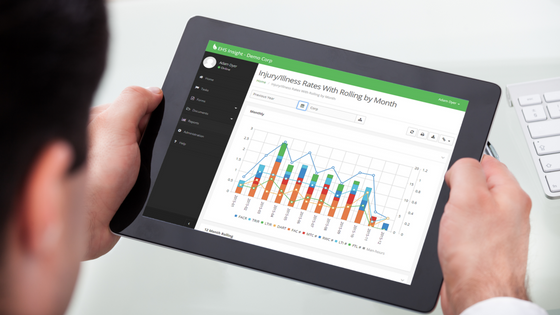Even the safest work environments can be susceptible to injuries and incidents. How you report these occurrences can go a long way in preventing future accidents and helping your company remain profitable.
Consider your current methods for reporting incidents:
- Do they meet OSHA standards?
- Do they emphasize timeliness and accuracy?
- Do they contain any follow-up procedures?
- Most importantly, do other team members understand how to report incidents in your absence?
What Do Good Reporting Procedures Look Like?
EHS departments may have their own tasks and procedures when it comes to executing a strategy, but incident reporting comes with its own set of legal requirements you have no control over.
Your reporting procedures should mirror those of OSHA if you want to remain compliant and avoid potential fines.
What to Report
OSHA mandates that companies are required to report a workplace fatality. You must also report any serious injury that results in hospitalization, amputation, or loss of an eye.
When to Report
All fatalities must be reported within eight hours. Other serious injuries have a 24-hour reporting window.
There are a few exceptions to this reporting window. Fatalities that occur after 30 days of a work-related incident are not required to be reported. Also, amputations, loss of an eye, or hospitalization are not required to be reported if they occur 24 hours after the incident.
How to Report
To report any of the above incidents, you can call your local OSHA office or the toll-free hotline at 1-800-321-OSHA.
You can also report a serious event online via the OSHA website.
If you’re reporting an incident online, you will need to provide your business name, names of the affected employees, time and location of the incident, a description of the incident, and the name and number of a contact person.
Federal vs State OSHA Reporting
The above regulations refer to federal OSHA standards. Your state requirements may differ from federal rules. If you are in a state not covered by federal OSHA, check with your local office to determine the correct procedures.
State-adopted plans that differ from federal requirements include the following: Alaska, California, Hawaii, Kentucky, Maryland, Oregon, Utah, Virginia, and Washington.
How Safety Software Can Solve Reporting Problems
Incident reporting is a serious task that simply cannot be overlooked. Varying state requirements can complicate the process, especially if your company operates in multiple states where procedures can differ.
If you miss a report, you could be facing fines along with potential legal backlash. If you report something that doesn’t require it, you’ve spent valuable time and resources that could have been better leveraged elsewhere.
Safety Software Streamlines OSHA Reporting
Safety software provides an extra defense for reporting procedures by eliminating the guesswork when it comes to OSHA requirements.
All OSHA reporting requirements are built into the system. By following pre-established workflows, you can follow your state’s procedures step-by-step to ensure no detail is overlooked.
Not only does incident reporting software help you create reports, it also lets you view the status of each report and track your activities.
You can complete every phase of the reporting process via the software to eliminate the need for a complicated paper-based process.
EHS Insight Incident Management Software is compliant with OSHA, along with WCB and RIDDOR, in a simple, user-friendly format that doesn’t overcomplicate reporting requirements.
The Results of Paperless Reporting
As a result, you get a streamlined, paperless way to manage and monitor reporting activities without the hassle or fear you haven’t completed requirements. In addition, you save time and resources when you don’t have to process your paperwork by hand.
Nothing falls through the cracks. Plus, your team members are better positioned to handle incidents in your absence by following easy-to-use workflows.
What Does Incident Management Software Look Like in Action?
Now that you know a little about OSHA’s reporting requirements and how software can simplify the process, take a look at EHS Insight in action.
Schedule a free trial to learn more.
